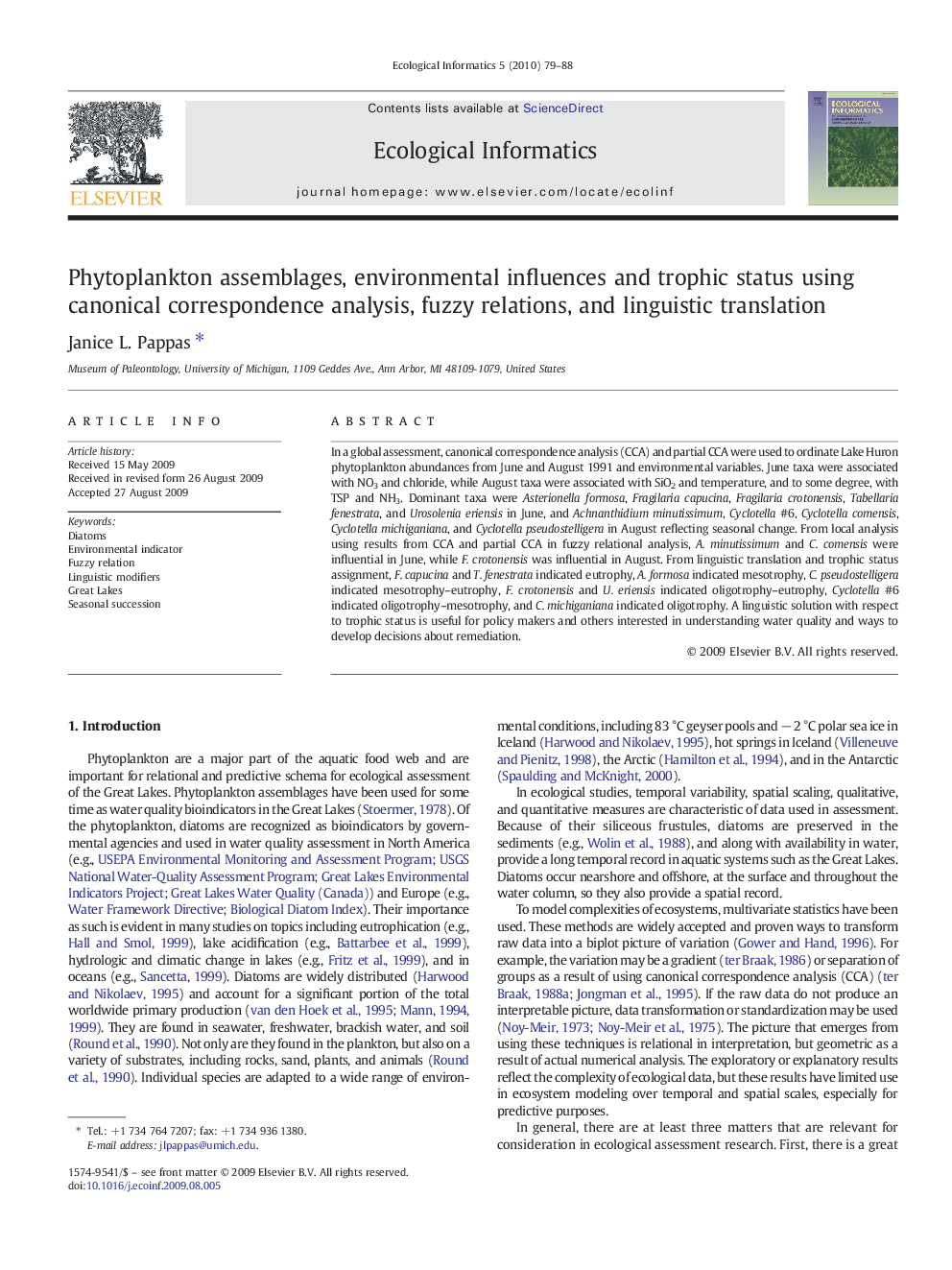| Article ID | Journal | Published Year | Pages | File Type |
|---|---|---|---|---|
| 4375337 | Ecological Informatics | 2010 | 10 Pages |
Abstract
In a global assessment, canonical correspondence analysis (CCA) and partial CCA were used to ordinate Lake Huron phytoplankton abundances from June and August 1991 and environmental variables. June taxa were associated with NO3 and chloride, while August taxa were associated with SiO2 and temperature, and to some degree, with TSP and NH3. Dominant taxa were Asterionella formosa, Fragilaria capucina, Fragilaria crotonensis, Tabellaria fenestrata, and Urosolenia eriensis in June, and Achnanthidium minutissimum, Cyclotella #6, Cyclotella comensis, Cyclotella michiganiana, and Cyclotella pseudostelligera in August reflecting seasonal change. From local analysis using results from CCA and partial CCA in fuzzy relational analysis, A. minutissimum and C. comensis were influential in June, while F. crotonensis was influential in August. From linguistic translation and trophic status assignment, F. capucina and T. fenestrata indicated eutrophy, A. formosa indicated mesotrophy, C. pseudostelligera indicated mesotrophy-eutrophy, F. crotonensis and U. eriensis indicated oligotrophy-eutrophy, Cyclotella #6 indicated oligotrophy-mesotrophy, and C. michiganiana indicated oligotrophy. A linguistic solution with respect to trophic status is useful for policy makers and others interested in understanding water quality and ways to develop decisions about remediation.
Related Topics
Life Sciences
Agricultural and Biological Sciences
Ecology, Evolution, Behavior and Systematics
Authors
Janice L. Pappas,
